The original title for this blog was V-Factor: How to Make Viral Content but I don’t want to lie to you. Content in of itself isn’t viral because going viral isn’t a guarantee–it’s simply a result of strategically executed content. Content types that go viral one time may fail to garner even half the shares when executed at a later time.
So, why even bother writing this post?
Good question. While there isn’t an exact formula for going viral, creating content that satisfies certain criteria has a much better chance of achieving viral stardom than content that doesn’t. I can’t tell you the number of clients that have requested that we create “viral” content to market their product or service–and it gets a massive eye roll from me every time(to be clear, the eye roll happens at a later time in a client-free zone), but I can’t say I blame them. For many brands, going viral can be marketing gold but what we try to explain in the nicest way possible is that asking us to create content that goes viral is like trying to pinpoint exactly why the Kardashians are famous. No one knows exactly, but for someone looking to recreate their own version of the Kardashian story, there are certain ingredients that can contribute to similar success (disclaimer: spare us the sex tape). Same goes for creating content that goes viral.
While certain factors such as timing and pure luck aren’t as tangible, this post will go through the factors that you can control. Ready to sprinkle some marketing fairy dust all over your content? Let’s begin.
1. Don’t Make Going Viral Your Primary Goal
If you’re a brand looking to sell a product or service, focus less on becoming famous and more on your customer. Too many brands make the mistake of creating wildly entertaining content in hopes of going viral but fail to make any impact on their target audience and hence, their sales. But if you create marketing content that is wildly entertaining and targeted to your desired audience? You might as well title it cha-ching!
Take one of the most successful viral campaigns in advertising history, the infamous Old Spice Man. This advertisement has 53 million views on YouTube alone which for an advertisement, is marketing gold. It checked all the boxes for what it takes to go viral but did it impact the brand’s bottom line? According to Nielson, the brand’s sales jumped 107% in the following months. With numbers like that, I’d say it did.
On the other hand, here’s a good example of a brand that hit the viral mark by a landslide but failed to increase brand equity. The notorious First Kiss campaign by clothing brand Wren got 7 million views on the first day and went on to garner millions of views after that. The reason why the video went viral isn’t too hard to decipher. It’s unexpected, stimulating to watch and taps into audience fascination triggers of lust, mystique and even a little bit of alarm (I can’t be the only one who cringed while watching two complete strangers kissing). But what the brand failed to accomplish is to tie it back to their merchandise. The video is so vague that it barely lists the name of the company and it isn’t clear what they sell. According to Inc., the video that explicitly mentions the brand name posted by the CEO got less than 100,000 views and the video got retweeted only 450 times from the company’s Twitter page. While some may say that 7 million views are a win in itself, I say that this is a good example of a company that placed more focus on going viral than raising brand awareness.
The purpose of starting with this point isn’t to crush your dreams of going viral. But why funnel unnecessary time and energy into something that garners no brand equity or monetary value? Unless you’re a company that has a big enough budget to spend on obscure, viral cat videos, you’re better off approaching going viral strategically. The following points will get into how to accomplish that.
2. Utilize Audience Fascination Triggers
The biggest difference between creating shareable content for an editorial platform like the Huffington Post and a company with the goal of marketing a product or service is that marketing content must be targeted to a specific audience. The intent of going viral should be secondary to reaching the right customers who have a need for your product or service but if your content goes viral in the process, you increase your chances of reaching more people in your desired audience segment.
According to brand marketing guru, Sally Hogshead, there are 7 triggers that cause an audience to be fascinated by your content. Incorporating one or more of these triggers can create a level of arousal in your audience that is common in content that goes viral–content that goes viral is almost always fascinating.
a. Passion/Lust
We already know that sex sells but this isn’t the only form of lust that Sally is referring to. The passion/lust trigger is activated by tapping into a reader’s desire for pleasurable activities. The reason that topics like sex, food and luxury work well in this case is because the passion/lust trigger is strongly tied to the five senses. Triggering a feeling of pleasure in your audience can lead to more sharing. However, this is more of a quick-win trigger because lust can quickly run dry.
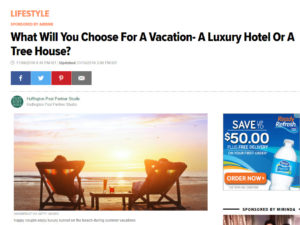
This post effectively incorporates the passion/lust trigger by recognizing that not every reader’s lust trigger is the same. This article appeals to an audience who loves the finer things in life as well as an audience who’s aroused by a more adventurous and simplistic approach to vacationing.
b. Alarm
The alarm trigger is used to create a sense of urgency in your audience which can increase the chances that your audience will share your content. Ever notice how posts about the latest product discovered to cause cancer spreads like wildfire even if the post is less than reliable? Readers share content that makes them feel like they’re doing their part to help make the world a better place. Also, people love drama. Using the alarm trigger to tap into either of these human needs can be effective. However, using this trigger must be navigated carefully because there’s a chance you’ll piss people off if your readers feel misled.

This post subtly invokes a feeling of alarm by advising that cancer-causing products could currently be making contact with your loved ones in your home. Moms with lots of mommy-friends on their social media accounts will most likely not think twice before hitting Share.
c. Mystique
Everyone loves a good mystery because it creates a sense of tension or internal conflict. Coca-Cola famously created mystique around their brand by creating content around their top secret recipe that’s hidden in a vault. While a soda recipe may not be as engaging as a James Patterson novel, it still worked to engage audiences and increase brand awareness.
108,688 Views
d. Power
Audiences are attracted to power not only because it’s sexy but because it’s appealing to relinquish a difficult task to someone who knows better. For example, handing over the reins of your fitness routine or digital marketing efforts to an expert is more appealing than trying to conquer it yourself. A good example of this would be the popularity of fitness and nutrition articles written by health & fitness gurus. The following article on MensHealth.com got 222,000 shares.
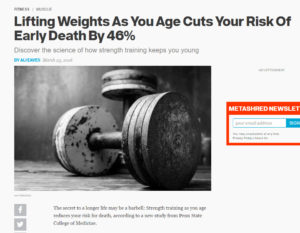
This post went viral because it communicates authority and credibility by presenting a tangible and specific benefit. On the other hand, a vague title such as “Lifting Weights May Help Cut the Risk of Early Death” would have most likely failed to garner even half those shares. Facts communicate authority and that in turn, communicates power.
e. Prestige
This trigger is very similar to power but is tied to some audience’s fascination with status and perceived respect. The prestige trigger causes virality by allowing audiences to communicate their own level of sophistication by sharing a particular piece of content. A fashionista who’s looking to gain respect from her peers will likely share an article that discusses Gucci’s newest fall line that debuted at Fashion Week. While highly targeted, this content has legs when shared in the right circle.
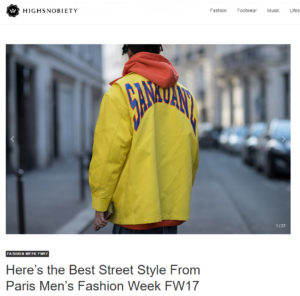
This post expertly targets a specialized yet powerful hybrid audience that likely contributed to the high volume of shares. Most fashion insiders pride themselves on knowing what’s hot in streetwear as well as on the runways in London and Paris. This post blends both ends of the spectrum well.
f. Rebellion/Vice
Everyone loves a good movement. Content that creates or supports a movement taps into an audience’s desire to stand for something, communicate their identity and belong to something bigger than themselves. The ALS ice bucket challenge is an excellent example of how content about a movement can explode, even among participants who didn’t clearly understand the cause behind it.
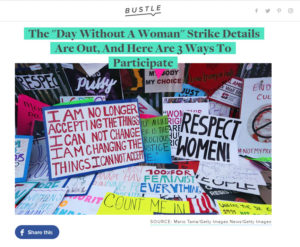
The viral success of the “Day Without A Woman” movement is pretty straight-forward. It was socially and politically charged as well as satisfying all the above checkboxes regarding identity and purpose. However, this post takes it one step further by offering explicit directions on how to participate–I’m willing to bet that some readers shared this without even reading the post just because of the title.
g. Trust
Trust is the safest trigger on this list but it can also make the least impact. While fostering a feeling of reliability and familiarity in your content can appeal to certain audience’s needs to feel secure, it’s not as fascinating and unexpected as the rest. Our agency utilized this trigger for a recent piece of content for a Medicare website. It did well because the trust trigger is a need in this specific industry.

Learning about and incorporating audience fascination triggers into your content can be a great tool in your go-viral arsenal. However, if you only take one insight away from this section, let it be this; know your target audience well enough to understand which triggers will ignite content arousal. For example, the Prestige trigger will fall flat if incorporated into health and medicare-related content. The Mystique trigger can go way wrong if used on an audience of data-driven engineers.
As discussed before, your best bet for determining which triggers will grab your desired audience’s attention is to conduct target audience research. Your research will lead to a thorough understanding of their key traits, most represented characteristics, user needs and how they consume content. Once you’ve learned this information, use these insights to decipher which ones will result in a click-through and a share.
3. Appeal to Humor or Narcissism
People love to laugh and show off. Surprise, surprise.
In a recent experiment done by Buzzsumo, the platform analyzed the top 10,000 most shared articles on the web and mapped each article to an emotion. Not surprisingly, 33% of them were funny. The “Charlie Bit My Finger” viral video has gained over 800 million views to date. The family has earned over $500K in revenue as a result of that video. How’s that for unbranded content?
The other notable emotion, at 17%, was awe. While this is fairly straight-forward, there’s value in dissecting this finding further. Why will an audience share something that’s funny or awesome rather than angry or sad (only 7% of the most shared articles on the web)?
According to a study done by the New York Times, people share content for these reasons:
- To bring valuable and entertaining content to one another.
- To define themselves to others (give people a better sense of who they are).
- To grow and nourish relationships (stay connected with others).
- For self-fulfillment (to feel more involved in the world).
- To get the word out on causes they care about.
If getting a good laugh is the only reason funny content attracts audiences, the subsequent sharing wouldn’t happen. They would simply view the post and be on their way. However, content that taps into an audience’s need to feel valued, unique and connected with others is what fuels the rapid sharing of humorous content. Sharing humorous content is like saying “look at me, I’m funny and cool despite my insecurities about still living in my parent’s basement”. We all know someone.
This brings us to narcissism.
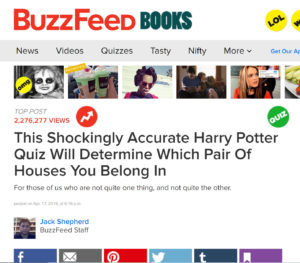
There’s a reason why Buzzfeed quizzes like “what kind of root vegetable are you” get shared more than content that is far more valuable. If discovering their root vegetable type allows a reader to feel more connected to their identity, they’ll share it. This is why Myers-Briggs personality tests have been famous for over 50 years. People like to talk about themselves through any means necessary. The Buzzfeed quiz above got 2.3 million views. Content like quizzes and personality tests allow readers to achieve this goal in a #humblebrag format. The good news for marketers that know their audience is that this type of content can be created for almost any industry. Additionally, opinion pieces that convey a strong position, even if highly controversial taps into this same need. Your content will get shared by those who are outraged by it as well as those who strongly approve. It’s a win-win for you.
4. Make Your Content Digestible and Shareable, Duh.
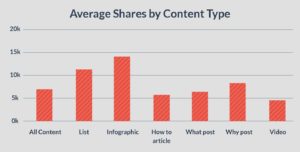
While the potential for going viral can’t be determined down to a science (take that Neil Patel), there have been certain types of content that tend to go viral more than others. This is indicative of the fact that going viral can sometimes just be about being digestible and shareable. While beautifully crafted, compelling stories are good and well, quick and easy content has more potential to be shared. When it comes to content structure, here are the types of content that tend to get the most shares.
a. Listicles
To reiterate, lists are easy to digest. A list post with clever, easy-to-navigate information that is funny and engaging is usually a home run. As much as we’d like to think that cyberspace appreciates beautifully narrated stories, according to Buffer, 55% of online readers skim your article for 15 seconds or less. Bummer. However, list posts are the perfect solution for the short-attention spans of the internet.
b. Info-graphics
Like list posts, info-graphics get shared more than any other content type. Info-graphics work especially well for industry-specific content because it can condense complex and lengthy information into an attractive and digestible piece of content. Info-graphics are big on platforms such as LinkedIn and Quora because professionals looking to identify themselves as knowledgeable in their field are more likely to share them.
c. Long-form blogs
This may be the most surprising item on this list because typically, shareable content tends to be quick and easy while tapping into the audience triggers listed above. However, when compared to shorter blogs (less than 1000 words), blogs that contain 1000 – 2000 words get more shares. A deeper dive into this fact can reveal why. When it comes to blogs, the copy is the main event. A reader who is more likely to read a blog is doing so because they’re committed to putting in the time and effort in order to absorb quality information. It’s safe to say that a blog with more than 1000 words is significantly more authoritative and informative than a blog that’s around 500 words. The more informative and valuable a reader perceives a piece of content, the more likely they will share.
d. Content with at least one image
Whether you’re creating a blog, listicle or how-to post, content that contains at least one image will get shared more. Images not only contribute to the attractiveness of a post, it also helps break up the text. No matter how well-written your content, most audiences won’t share just a page of text.
e. Content with Social Media Meta Information
I cannot stress the importance of this more. If you want readers to share your content, create content that’s appealing to share, makes sense, right? As discussed before, audiences care about how they look on social media. No matter how strong of a connection your content makes, they will not share content that makes them look bad (narcissistic much?).
It Ain’t Over Until the Recap…
To summarize, content that is more likely to go viral…
- Uses audience fascination triggers that appeal to your target audience.
- Is funny or awesome, whenever possible.
- Is shareable and digestible.
- Chase’s brand equity, not viral stardom.
I incorporated some of my own go-viral techniques in this post as well, care to guess which ones? Okay, time’s up. They are:
- This post is over 2000 words in length.
- It contains rich imagery and media such as charts, screenshots, and video.
- It contains external links to high-value content platforms such as the Huffington Post, Men’s Health and BuzzFeed, as well as internal links to our own site.
- It incorporates SEO best practices such as image alt-text, page metadata, and social metadata.
Getting to toot my own horn isn’t the only reason I included the items above. It’s important to know that increasing your visibility on search engines such as Google can be instrumental in going viral. More organic traffic leads to more organic shares.
With that, I release you into cyberspace–get those shares and make that money, honey!
Dinuki Suraweera is a copywriter at iPullRank. She has been featured on the Huffington Post, The Thought Catalog, and Relevant Magazine. Her co-workers have dubbed her rather snarky writing voice “Sri-anna”.
- V-Factor: How to Create Marketing Content That Goes Viral - March 15, 2017
- The Art of Storytelling & How to Use it to Market Your Brand - January 25, 2017
- How We’d Do Content Strategy for FitBit - August 17, 2016





